Did you know that there are over 50,000 different kinds of spiders in the world? That’s more than the number of species of mammals and birds combined! Isn’t it mind-boggling?Now, imagine how many spiders there might be in Australia, a land known for its extraordinary wildlife.
Did you know that there are approximately 3 million spiders for every single human on the planet? That’s right, these eight-legged creatures lurk in the shadows, outnumbering us in ways that send shivers down your spine. With their delicate yet menacing webs, their swift movements, and their mysterious lifestyles, spiders have the ability to both captivate and send a chill down your spine.
Spiders are fascinating creatures that can evoke a mix of awe, curiosity, and, yes, a little bit of fear too. But don’t worry, because today we’re going on an adventure to discover the incredible world of spiders, especially the ones found in Australia. We’ll explore their unique features, their amazing abilities and debunk some common misconceptions along the way. So, get ready to spin a web of excitement as we delve into the captivating realm of spiders in Australia!
Stay Spider Safe!
Always remember to be spider smart and safe. Always respect spiders and keep your distance. Spiders do not like to be approached – especially in their habitat – the bush.
If you think you are bitten by a venomous spider, contact emergency services immediately on 000. Seek medical assistance immediately for all potentially venomous bites.
Venomous Vs. Non-Venomous: Understanding the Diversity of Spider Species in Australia
Hey there, curious minds! Let’s unravel the mystery of venomous and non-venomous spiders in Australia. Now, you might be wondering, are all spiders venomous? Well, here’s the scoop: most Australian spiders do have venom, but hold your excitement because the majority of them are actually harmless to us humans. You see, their venom is designed to affect their tiny prey, like insects, and not us big humans. Cool, right?
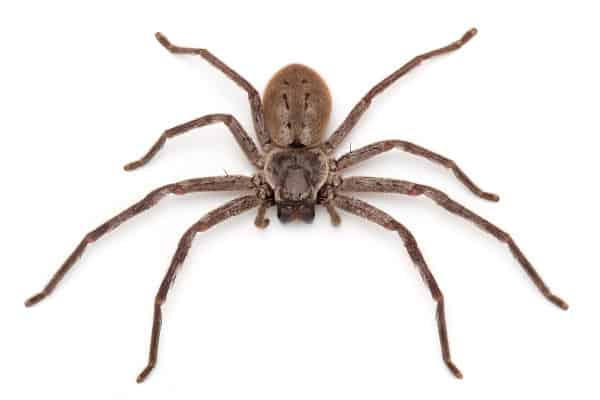
But here’s an interesting fact: there’s a special group of small spiders called Uloboridae, and guess what? They’re the superheroes of the spider world because they don’t have venom glands at all! Yup, they’re the only ones in Australia who can proudly say they’re non-venomous.

So, remember, most spiders you’ll encounter are harmless, and the ones without venom are like friendly neighbourhood spiders, just doing their thing.
Spider Bites in Human
Hey there, young adventurers! Let’s talk about spider bites and how they stack up in the grand scheme of things. It’s true that spiders are the kings and queens of venom in Australia, with thousands of species calling our land home. But don’t let that scare you! The best news is that spider bites are quite rare and not as dangerous as some other critters out there.
You see, spiders are less life-threatening than snakes, sharks, or bees. Can you believe it? Yep, more people sadly have allergic reactions to bee stings than those affected by spider bites. So, while we happily hop in our cars daily (even though car accidents claim many lives each year), we don’t need to worry too much about spiders.
But hey, let’s not completely dismiss them. Spider bites can cause some problems if not treated on time. The venom they carry has a mix of dangerous chemicals, some of which can be harmful to us humans. However, here’s the catch: spiders use their venom to catch and paralyse their small prey, not to harm us. So, when they bite us bigger organisms, like humans, the venom is usually in small quantities that our bodies can handle.
And here’s an interesting fact: there’s an antivenom available for the bites of two of our more dangerous spiders, the funnel web and the redback. But here’s the thing, antivenom is rarely needed because severe spider bites are pretty rare too.
So, remember my brave explorers, while it’s important to be cautious around spiders, they’re not as dangerous as they may seem. Just like getting stung by a bee, their bite might cause some discomfort, but with the right care and treatment, everything will be alright. Stay curious and keep your spider senses tingling!
Top Dangerous Spiders In Australia
Sydney Funnel-Web
Hey there, brave adventurers! Get ready to learn fascinating details about one of the most notorious spiders in Australia — the Sydney Funnel-web Spider! This eight-legged wonder might give you a shiver down your spine, but let’s separate fact from fiction and discover the fascinating truth about these creatures.
If you ever come across a Sydney Funnel-web Spider, you won’t be able to miss its dark brown to black shiny body. Look closely, and you might notice its unique finger-like spinnerets at the end of its abdomen. The males have an extra surprise—a large mating spur on their second pair of legs! When threatened, these spiders show off their impressive fangs, towering above the rest.
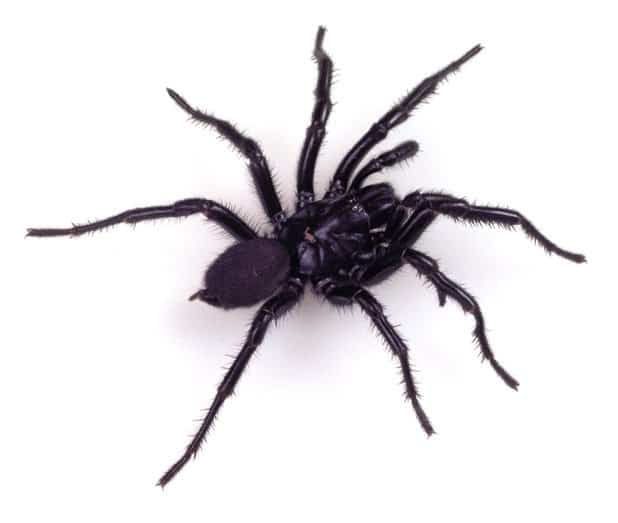
Now, here’s something really cool about Sydney Funnel-webs—they can be spotted in a multiple habitats, from urban areas to forests. They adapt to their surroundings and sometimes even venture into human-populated places. Imagine crossing paths with a spider that calls your backyard or car its home! But don’t worry, they’re just as startled as you are.
Funnel-web spiders have a clever hunting strategy. They burrow under logs and rocks, creating a cosy and humid shelter. When their prey, like beetles or cockroaches, unknowingly walks across the spider’s cleverly placed silk trip-lines, the spider rushes out to catch its meal. Talk about being a sneaky spider detective!
Now, let’s address a few myths about these spiders. Contrary to popular belief, not all funnel-web bites are life-threatening. While their venom is powerful, it’s important to remember that with proper first aid and medical attention, people can recover. It’s also worth mentioning that Sydney Funnel webs don’t jump onto or chase people, and they definitely don’t live in houses—those are just urban legends!
So, my courageous friends, if you ever encounter a Sydney Funnel-web Spider, it’s best to admire them from a safe distance. Remember, they play an important role in our ecosystems, and they’re just one part of the incredible tapestry of Australian wildlife.
Other funnel-webs
Did you know there are around 40 different species of funnel-web spiders? But don’t worry, only a few of them are known to cause serious trouble, mostly in southern Queensland and northern New South Wales.
One of the most impressive and dangerous funnel-web spiders is the northern tree funnel-web spider, with its size reaching about 4-5 cm. And let’s not forget about the smaller yet equally formidable southern tree funnel-web spider! These spiders have a reputation for their potent venom, and about half of their bites can result in severe symptoms. Yikes!
But fear not, my brave friends! We have some superhero medicine to the rescue—antivenom! Thanks to the amazing work of scientists and doctors, antivenom has been developed and proved to be highly effective. So, if someone happens to have a not-so-friendly encounter with a funnel-web spider, medical professionals are ready to lend a helping hand.
Now, let’s take a peek into the culinary preferences of these fascinating spiders. They have quite a diverse menu, ranging from beetles to frogs! It seems like they have a hearty appetite. And guess what? They are more active during the warmer months, from November to March. So, keep your eyes open for them if you’re exploring the great outdoors during that time!
Redback spider
Hey there, curious adventurers! Get ready to meet the Redback Spider, also known as the Australian Black Widow. These little creatures might seem small, but they pack a powerful punch!
The female Redback Spider is a sight to behold. It has a shiny black body with a striking red line and a cool hourglass-shaped red/orange streak on the lower abdomen. She measures about 10 mm long, which is as tiny as a little button. On the other hand, the males are even tinier, measuring only 3-4 mm. Talk about being itsy-bitsy!
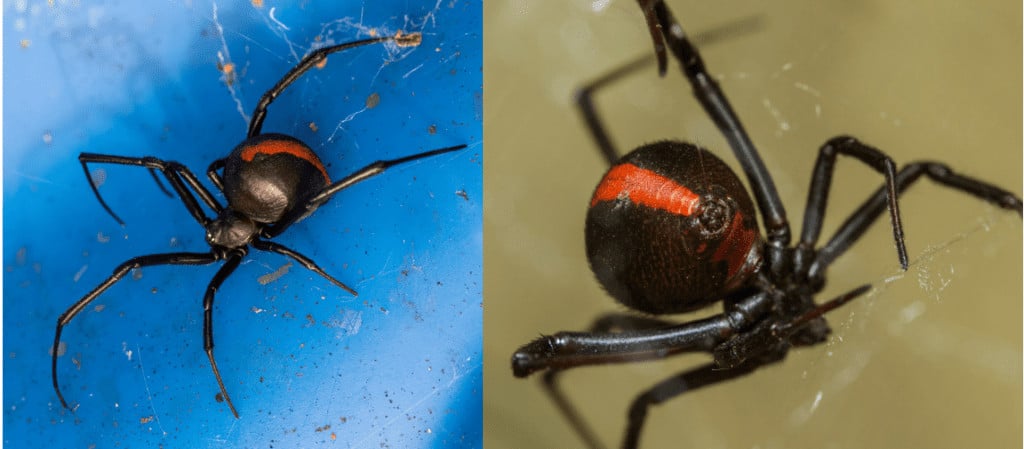
Now, here’s a fun fact: Redback Spiders love the night! They are nocturnal creatures, which means they come out to play as the night approaches. During the day, they hide in small crevices, probably catching up on their beauty sleep. So, be extra cautious when you’re exploring after dark.
You might find it surprising, but these crafty spiders have a preference for warm and cosy spots, just like us humans. That’s why you might sometimes find them near or even inside human dwellings. But don’t worry, they don’t invite themselves over for tea parties or anything like that. They just want a comfy place to call home.
Now, let’s talk about their venom. The Redback Spider’s bite can be a bit troublesome for humans, especially if left untreated. If you happen to get a bite, you might experience symptoms like nausea, vomiting, headache, and feeling a bit agitated. But remember my brave friends, help is always available! There’s a special medicine called antivenom that can come to the rescue and make things all better. Just make sure to seek medical assistance right away.
So, while the Redback Spider might seem a bit intimidating, it’s important to remember that they play an important role in our ecosystem. Just like any other creature, they have their place in the great web of life.
Mouse spider
Hey there, adventurous explorers! Let’s scurry into the fascinating world of mouse spiders. These creatures might have a name that reminds us of cute little rodents, but they’re actually spiders with some interesting traits!
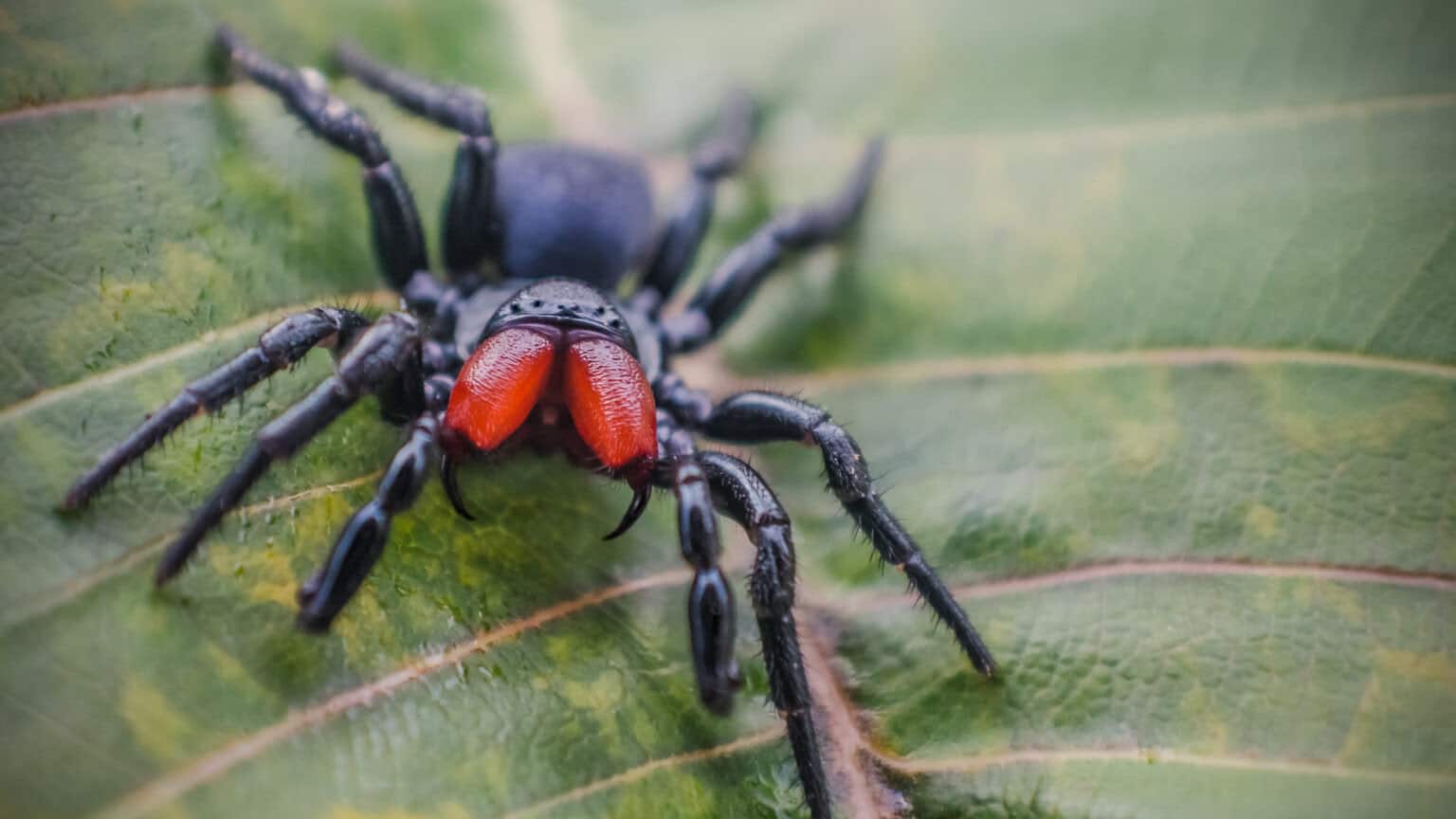
In Australia, you can find not just one but eight different species of mouse spiders. They can be found all across the country, making their homes in burrows. You might spot them near rivers, waterways, and sometimes even in suburban areas. These spiders know how to adapt to different habitats!
Now, here’s something cool to know: the venom of mouse spiders is similar to that of funnel-web spiders. But don’t worry, no deaths have been attributed to mouse spiders. In fact, there has only been one case of severe envenomation recorded. That’s good news! And guess what? Scientists have discovered that the antivenom used for funnel-web spider bites can also be effective for mouse spider bites. So, we have a superhero treatment ready to save the day!
Mouse spiders are not the fastest movers in the spider kingdom. They tend to be rather slow and not too interested in picking fights. They’re not known to be aggressive, which is a relief. The females usually stay cosy in their burrows, while the males venture out on exciting journeys to find them. This usually takes place from late summer to early winter, when love is in the air for these spider romantics.
Here’s a fun fact: unlike many other spiders that prefer the cover of darkness, mouse spiders are often active during the daytime. They’re like the early birds of the spider world, catching the worm before others wake up. It’s their way of avoiding the scorching heat and day-active predators. Smart strategy, right?
So, my brave adventurers, if you ever come across a mouse spider, remember that they’re not the kind to pick a fight. Just give them their space. And if a bite does happen (though it’s quite rare), seek medical attention just to be safe. Now, go out there and explore the amazing world of Australia’s fascinating creatures. Happy spider spotting!
Trapdoor spiders
Hello there, curious adventurers! Get ready to know more about the mysterious world of trapdoor spiders, the masters of disguise! These clever critters belong to the Idiopidae family and have some pretty fascinating tricks up their eight legs!
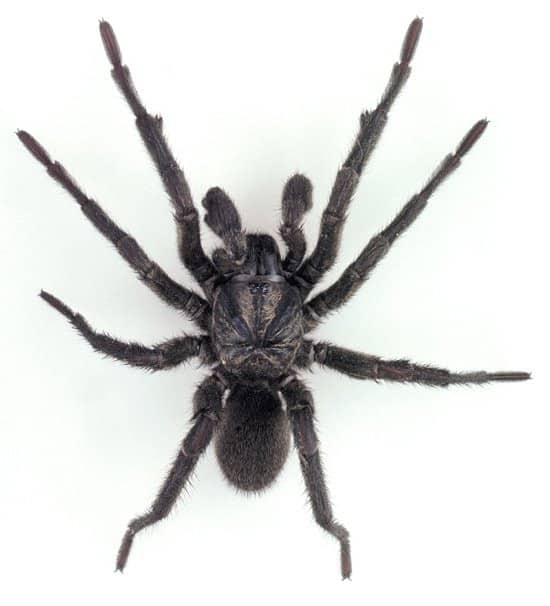
Trap door spiders earned their name because they have a creative way of catching their prey. They create cunning burrows and crafty trap doors at the entrance. The trap door is like a hidden surprise, camouflaged to perfection, fooling unsuspecting insects into tumbling right in! Talk about a sneaky spider strategy!
These spiders come in different sizes, ranging from 1.5 to 3 centimetres long. And here’s an interesting fact: just like in many spider species, the females are larger than the males. But watch out when you encounter a male trapdoor spider! They can be a bit more on the aggressive side when they feel threatened. So, it’s the best idea to give them their space.
You can find trapdoor spiders all across Australia, whether in natural habitats or even in urban environments. They’re quite adaptable little critters! Now, when it comes to their bites, don’t worry too much. For humans, their bites usually result in minor symptoms like localised pain. Occasionally, you might experience some nausea, lethargy, or a general feeling of malaise. But hey, it’s always a good idea to treat them with caution, just like you would with funnel-web spiders. Safety first!
Here’s a mind-blowing spider fact: while most spiders live for about one year, trap-door spiders are quite the long-living arachnids! They can stick around for an impressive five to twenty years. That’s a lot of birthdays to celebrate!
So, my brave explorers, keep an eye out for these clever trap door spiders during your adventures. Admire their impressive burrows and trap doors, but remember to give them their space. And if you luckily happen to come across one, appreciate their natural camouflage skills and their ability to adapt to different environments.
White-tailed spiders
Hey there, adventurous explorers! Get ready to discover the mysterious world of the white-tailed spiders, the cool vagrant hunters of the night! These spiders, Lampona cylindrata and Lampona murina, are quite the wanderers, and they have some fascinating tales to share!
Picture this: white-tailed spiders roam across southern Australia, from the sunny shores of Queensland to the beautiful landscapes of Tasmania and from the eastern coast to the western wonders. They’re true explorers, making their homes in both natural and urban areas. You might even find them in your own backyard!
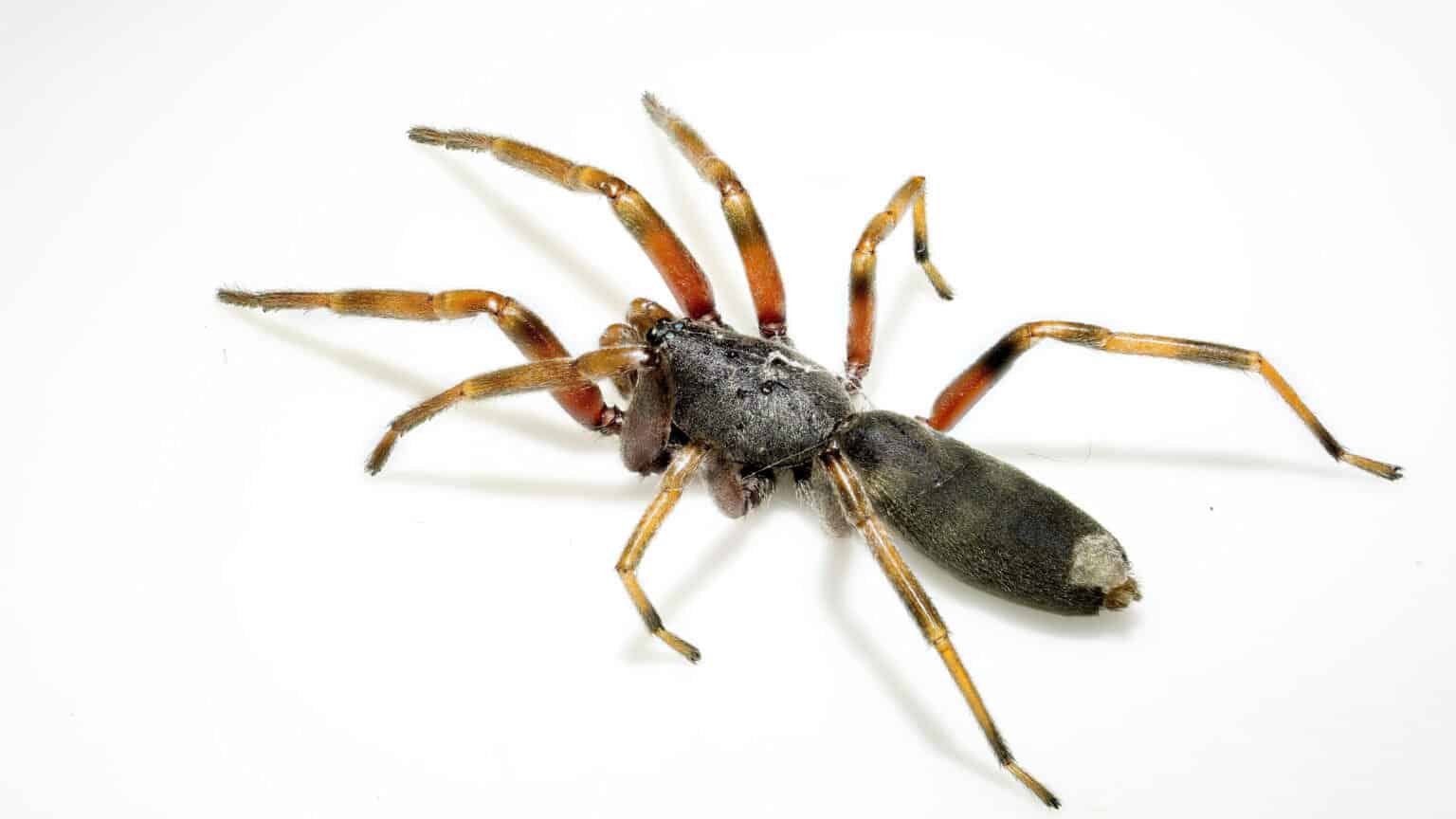
Now, here’s where things get interesting. These spiders have gained quite a reputation for their venom, with some stories even claiming that it can cause flesh-eating effects. But guess what? The scientific evidence tells a different tale! Recent studies have shown that the venom of white-tailed spiders doesn’t pose any major danger to us humans. In fact, its effects are limited to mild local pain. So, no need to worry about any flesh-eating adventures with these spiders!
But wait, there’s more! These stealthy hunters have a particular taste for other spiders. They’re like the ninjas of the spider world, prowling around at night, seeking out their unsuspecting prey. So, while they might not be spinning elaborate webs, they’re definitely skilled in the art of spider hunting.
It’s important to remember that sometimes our eight-legged friends get a bad reputation. White-tailed spiders have often been wrongly blamed for difficult-to-diagnose skin ulcers. So, let’s give these spiders a fair chance and appreciate them for who they truly are.
So, my brave explorers, if you happen to come across a white-tailed spider during your nighttime adventures, remember that they’re just curious hunters on their own mission. Enjoy their presence, but always treat them with respect. And remember, when it comes to the white-tailed spiders, there’s no need to fear.
Australian tarantulas
Calling all fearless adventurers! Prepare to meet the intriguing native tarantulas of Australia, also known as whistling or barking spiders. Why, you ask? Well, these extraordinary creatures have a secret talent—they can produce sounds by rubbing their front limbs against their jaws. That’s right, they’re like the rock stars of the spider world, making their own unique music!
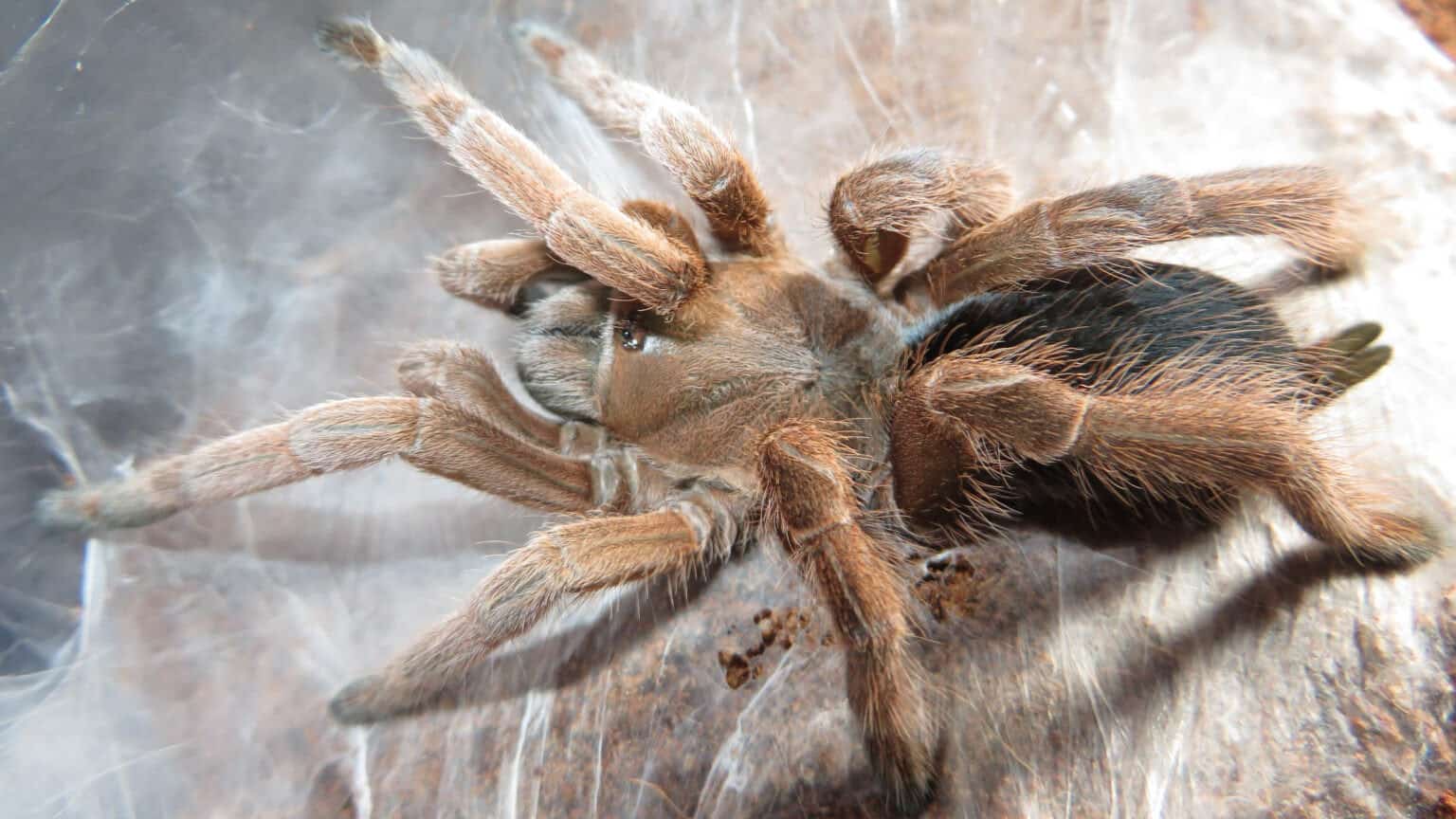
But hold on a moment, don’t let the name “bird-eating spiders” fool you. While it might sound scary, these tarantulas rarely go after our feathery friends. In reality, they prefer a more varied diet, munching on insects, including other spiders, and even small reptiles like lizards and frogs. Occasionally, they might indulge in the hatchlings of birds, but it’s definitely not a regular occurrence.
Now, let’s talk about their appearance. These tarantulas are known for their imposing size and hairy legs, with bodies reaching around 6 centimetres and leg spans that can stretch up to a whopping 16 centimetres! That’s like having a spider superhero with long, spindly limbs. But fear not, my brave companions, because, despite their intimidating appearance, these tarantulas pose no fatal threat to humans. Their bites can be quite painful due to their large fangs, which measure about 1 centimetre in length. However, severe effects like nausea, vomiting, and fever are quite rare. Phew!
But wait, there’s more to the story. As amazing as they are, these tarantulas can actually be dangerous to our four-legged friends. Yep, they have the ability to harm our canine companions, so it’s important to keep an eye out for our furry pals during encounters with these fascinating creatures.
Now, let’s talk about longevity. Female tarantulas live for an impressive 12 years, while their male counterparts have a shorter lifespan of about five years. So, it’s safe to say these spiders know how to make the most of their time on this Earth.
Remember, my daring explorers, the world of tarantulas is full of surprises. Despite their size and hairy demeanour, these creatures are more fascinating than fearsome. So, if you ever come across a tarantula in the wild, just take a brief moment to appreciate its unique talents and respect its place in nature’s grand tapestry.
Recluse spider
Hey there! Let’s dive into the world of the recluse spider, also known as the fiddleback spider, and clarify something right off the bat. You might have heard some alarming stories about these spiders inflicting terrible damage to human tissue, but guess what? It was all just a big hoax! So, let’s separate fact from fiction and unravel the truth about these intriguing creatures.
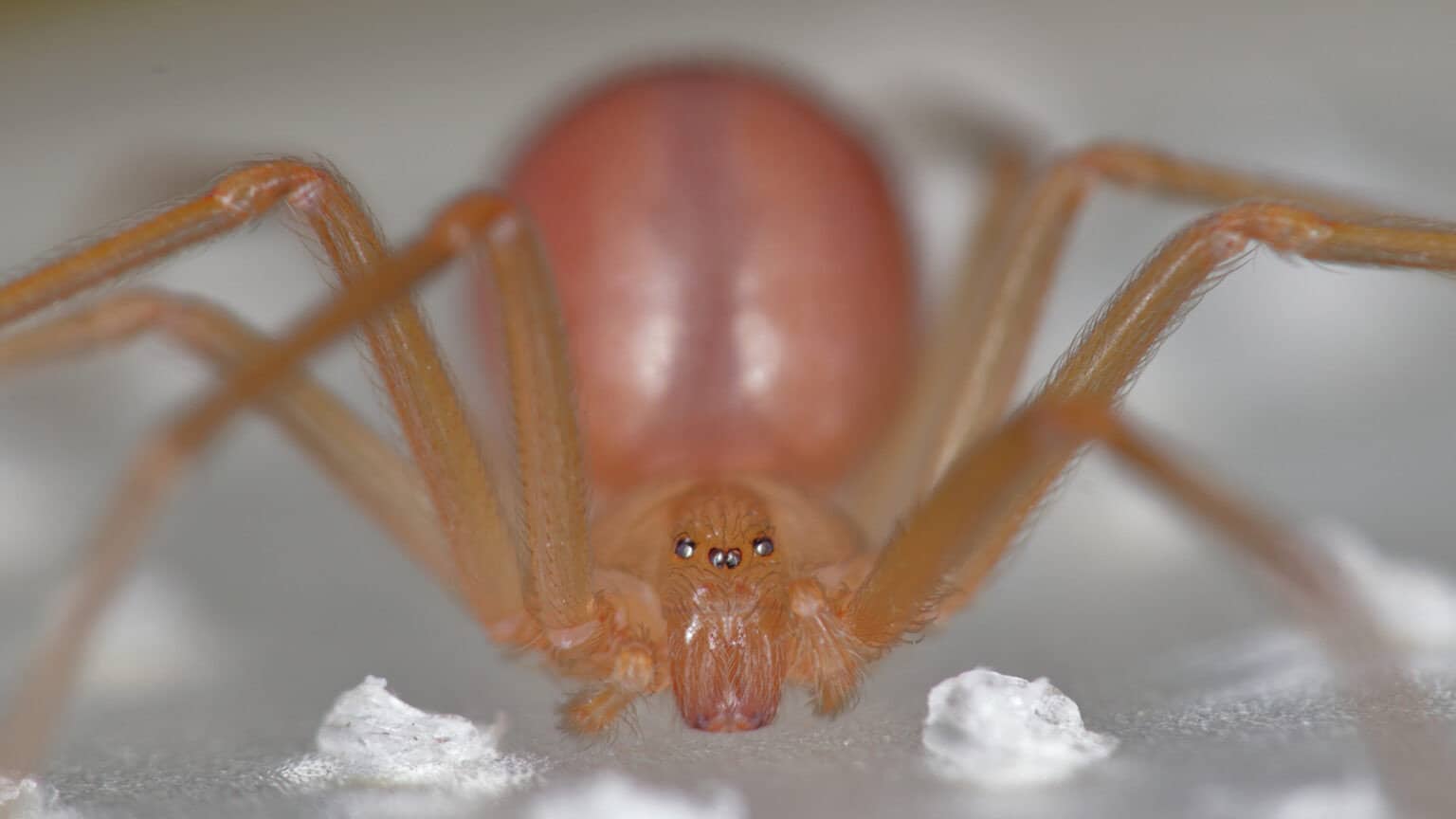
First things first, the recluse spider does possess venom that can be potentially dangerous. Its venom is haemotoxic, which means it can harm both the blood and the skin. However, here’s the exciting news for all you Australian explorers: in the 20 years that the fiddleback spider has been known to exist in Australia, not a single case of envenomation has been reported. Yes, you heard it right—zero, zip, nada! So, despite the myths and legends, this spider can hardly be considered dangerous in Australia. Phew, that’s a relief!
But hold on, fellow adventurers! While recluse spiders may not pose a threat Down Under, they are indeed a major cause of serious bites in South America. It’s always important to remember that different regions of the world have their own unique ecosystems and wildlife, so it’s crucial to stay informed and aware when exploring new territories.
Here’s an interesting tidbit about these spiders: they have tiny fangs! Yep, their fangs are so small that they’re not really inclined to bite unless they feel threatened. So, no need to worry about these spiders sneaking up on you and sinking their teeth into your skin. They prefer to keep to themselves and go about their spider business.
Huntsman spiders
Hey there, brave explorers! Let’s shine a light on the mysterious huntsman spiders, a fascinating family known as Sparassidae. Now, I know what you might have heard about these creatures—big, scary, hairy spiders that appear out of nowhere and give you quite a fright! But fear not, for we shall uncover the truth about these eight-legged wonders.
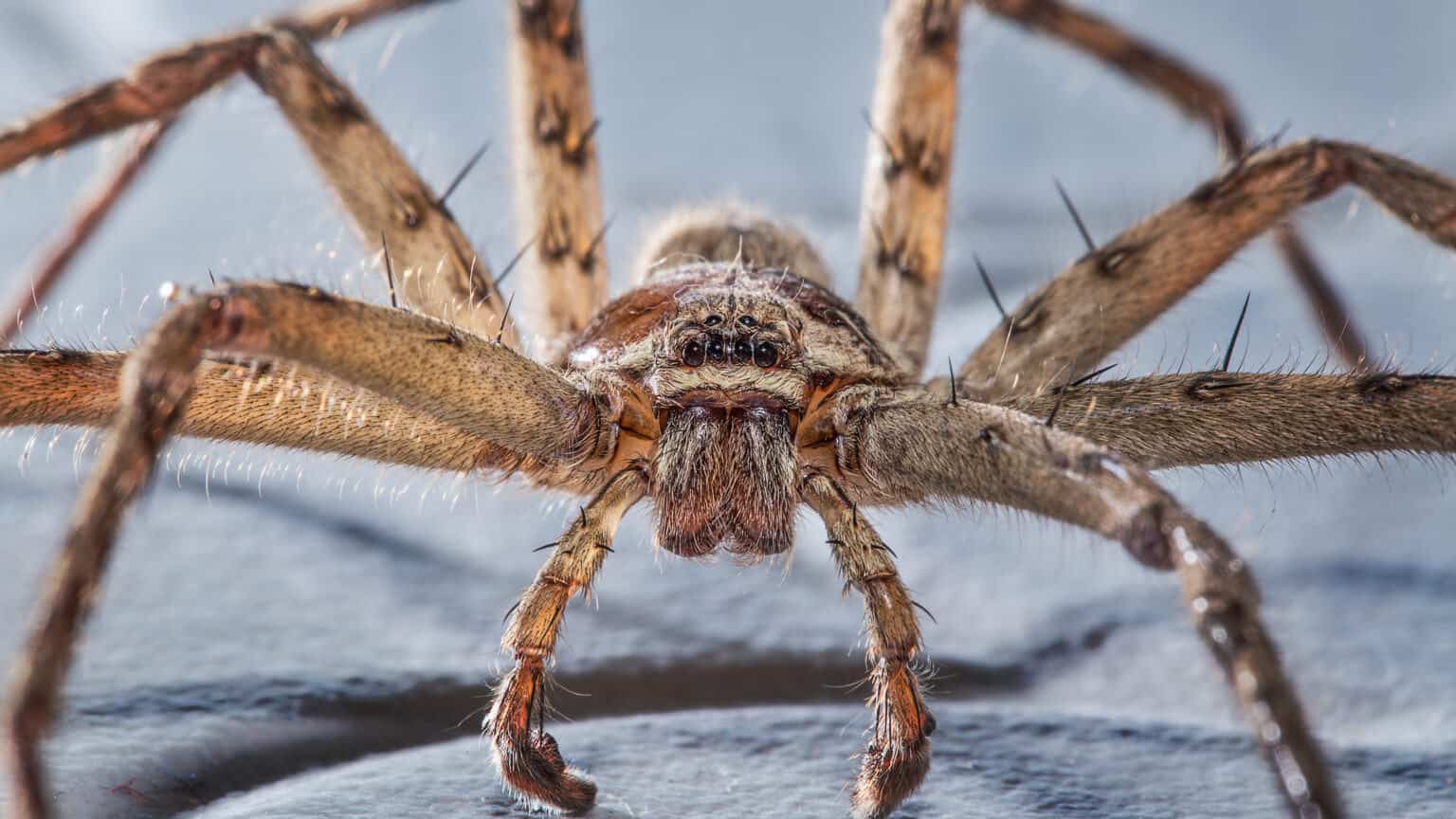
Huntsman spiders are quite the celebrities in Australia, as they can be found all over the country. With a leg span reaching up to a whopping 15 centimetres, they sure know how to make an entrance! But here’s the exciting news: despite their intimidating appearance, huntsman spiders are actually quite reluctant to bite humans. They’d rather make a swift exit when approached. So, no need to fear their venom—it’s not considered dangerous for us adventurous humans.
Now, let’s talk about the true danger of these spiders. It lies not in their venom but in the unexpected surprises they can cause. Imagine cruising down the road, minding your own business, when suddenly a huntsman spider decides to make a grand appearance from behind your car’s sun visor! It’s enough to startle even the bravest of drivers, leading to some interesting—and sometimes comical—driving manoeuvres. So, beware of these spiders causing unexpected driving adventures!
But here’s an interesting twist, my fellow adventurers: huntsman spiders can actually be allies in our homes. How, you ask? Well, they play a crucial role in pest control! These spiders have quite the appetite for smaller insects, so they help keep those pesky critters in check. Consider them the guardians of your humble abode, silently working behind the scenes to maintain harmony with nature.
So, as we wrap up our journey into the realm of huntsman spiders, remember this: appearances can be deceiving. While they may startle us with their size and sudden appearance, these spiders are more likely to run away than to bite. And let’s not forget their valuable contributions as pest controllers.
Common Garden Orb Weaver Spider
Hey there, curious nature enthusiasts! Let’s unravel the mysteries of the common garden orb-weaver spiders, the little eight-legged architects who love to spin their intricate webs in gardens all across Australia. You’ve probably seen them before, and trust me, they’re more fascinating than they might seem at first glance!
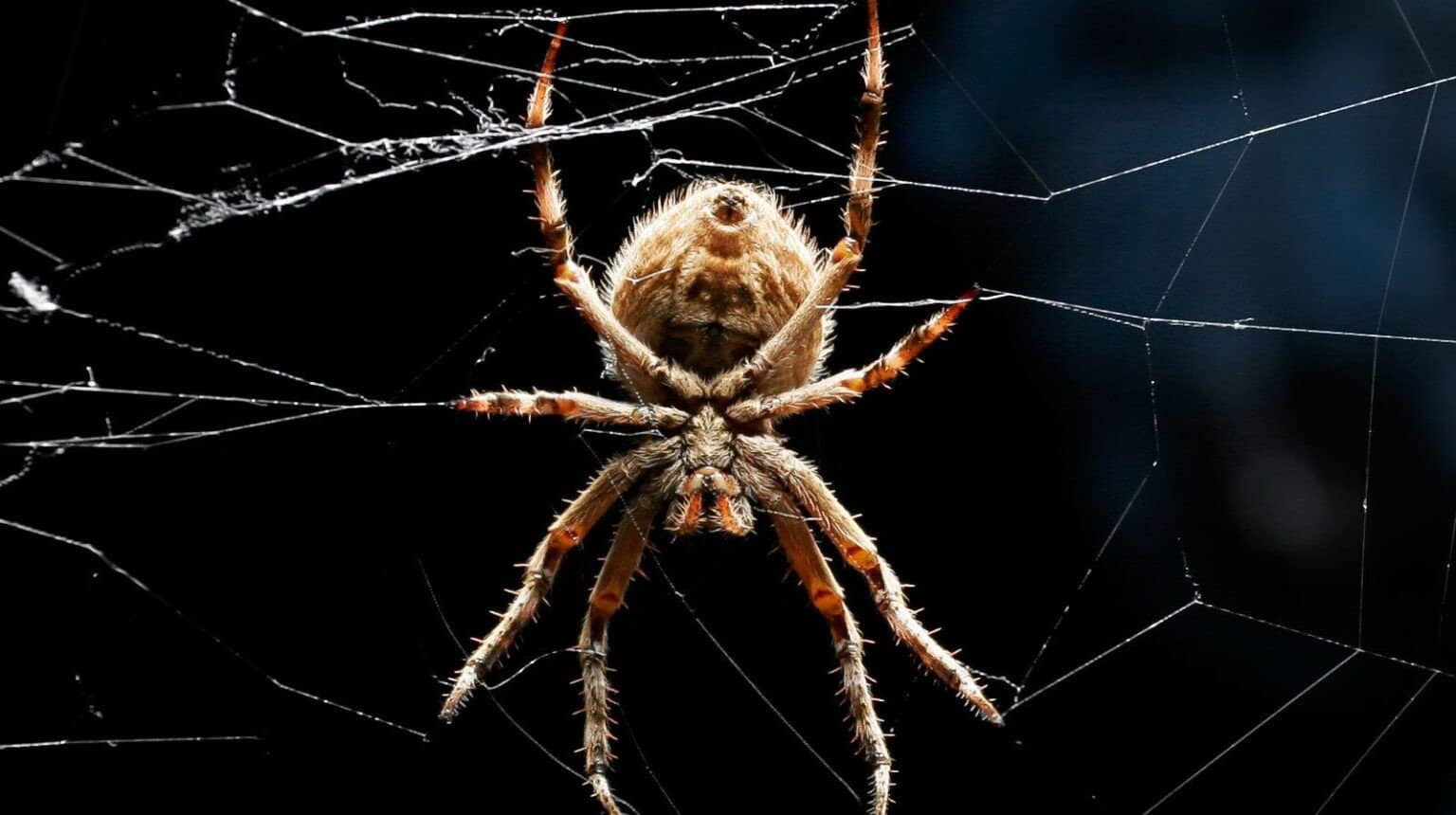
These spiders measure between 1.5cm and 3cm, making them not too big but not too small either. They’re just the right size to catch the attention of curious explorers like you! And guess what? They’re the most common spider species to give a little nip with their tiny fangs. But don’t worry, their bites usually have only minor effects, like some local pain. So, it’s more of a “hey, watch out!” rather than a serious danger.
Now, let’s talk about their web-weaving skills. These clever spiders know exactly where to set up shop to catch their next meal. You’ll often find their intricately woven webs between trees, on hedges, or even on your trusty washing line. They choose these strategic locations because they’re like highway rest stops for other insects—perfect places for a quick snack! Their sticky threads are a trap for unsuspecting bugs that fly right into their clutches.
But here’s a fun fact: these orb-weavers are creatures of the night. While you’re snuggled up in bed, they’re out and about, hunting for their next meal. During the day, they prefer to rest and hide, tucking their long legs neatly under their bodies. You might spot them hanging off a delicate thread under a leaf or even blending in with the clothes hanging from the line. They sure know how to camouflage themselves!
So, my young adventurers, the common garden orb-weaver spiders, are nature’s skilled web spinners, setting up shop in gardens all over Australia. While their bites might give you a little pinch, they’re more interested in catching insects than bothering humans. Just be sure to give them their space and admire their impressive webs from a safe distance.
Most Common and Least Dangerous Spiders in Australia
Christmas Jewel Spider
Get ready to meet the dazzling Christmas Jewel Spider, also known as the Jewel Spider and the Christmas Spider. This unique species is one of the many kinds of spiders you can find in Australia. Let’s dive into their fascinating world and discover what makes them so special!
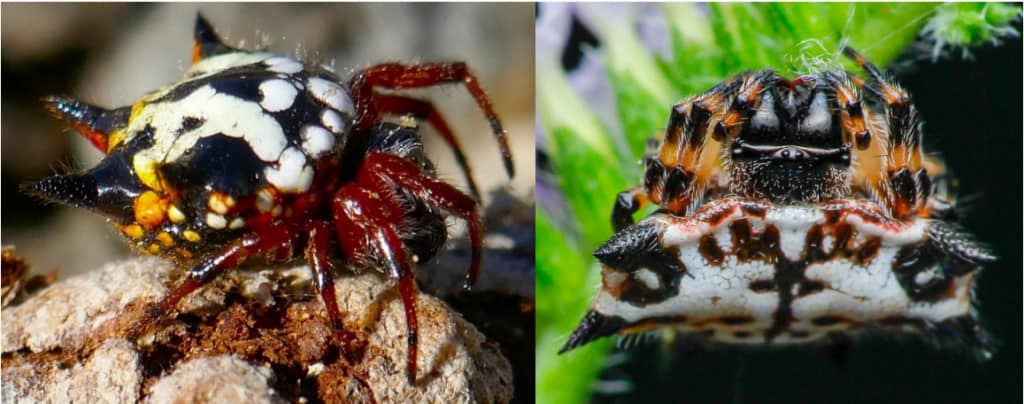
The Christmas Jewel Spider is all about style and flair. Females of this species measure around 12 mm (0.47 in), while males are a bit smaller, measuring around 5 mm (0.20 in). What really sets them apart are the six distinctive spines on their abdomen, which make them easy to identify. Picture a tiny spider rocking a cool and edgy look!
Now, let’s talk about their vibrant appearance. These spiders love to show off their colours! Their predominantly black bodies are adorned with striking white, yellow, and orange patterns. It’s like having a mini work of art spinning webs right in front of you. Talk about a fashion statement in the spider world!
Here’s something fascinating about the Christmas Jewel Spider: they’re social butterflies! Well, not really butterflies, but you know what I mean. Unlike most other spiders that prefer solitude, these spiders like to hang out in groups. You’ll often find them in large aggregations, with their interconnecting orb webs creating a mesmerising sight. It’s like a spider community, with webs overlapping and forming intricate patterns. It can be a bit unsettling to see so many webs together, but it’s a testament to their unique social behaviour.
Now, I know what you might be thinking—are these spiders harmful to humans? The good news is that they pose no real danger. They’re not aggressive critters, and biting is their last resort if they feel threatened or disturbed. Their bite might cause some temporary redness, itching, and swelling, but that’s about it. So, no need to worry about these little creatures ruining your day. Just be careful not to get tangled in their large, sticky webs if you’re out hiking or backpacking—it can be quite inconvenient!
So, my adventurous friends, keep an eye out for the dazzling Christmas Jewel Spider on your next nature exploration in Australia. Their distinctive spines, vibrant colours, and sociable nature make them a truly unique species. And remember, while they might look impressive, they’re harmless companions in the great web of life.
Long-bodied Cellar Spider aka Daddy Long Legs
Hey there, curious explorers! Let’s shine a light on the Long-bodied Cellar Spider, also known as Pholcus phalangioides or commonly known as daddy-long-legs. These spiders are the ones you often spot hanging out in the corners of your basement. You know the ones I’m talking about, right?

The Daddy Long Legs is easily recognizable by its long and delicate body. Its cephalothorax (head) and abdomen come in different shades of brown, giving them a distinctive appearance. Female spiders have a body length of around 8 mm (0.31 in), while males are slightly smaller. But what really makes them unique are their long legs, which can be around 5 to 6 times the length of their body. Talk about having some serious leg power!
Now, here’s an interesting fact about these cellar spiders—they’re quite the homebodies! You’ll often find them cozying up in homes and buildings across Australia. They prefer warm habitats, which is why they love hanging out in our basements. In fact, these spiders originally come from subtropical climates in Asia. So, when you clean your basement and spot these delicate creatures, remember that they’re just seeking a comfortable place to call home.
Now, here’s a handy tip: cellar spiders can actually be beneficial in our homes. They are known to hunt down and kill other types of spiders. So, if you have a few pesky arachnids spinning their webs around, the Long-bodied Cellar Spider might come to the rescue. However, it’s important to note that they can also eradicate native spider species, so it’s a delicate balance in the spider world.
One fascinating behaviour of these spiders is that they leave their webs to hunt for other spiders. Yes, you heard it right—they’re on a spider-hunting mission! When they find another spider, they use their long legs to subdue their victim, ensuring they avoid getting bitten in retaliation. It’s a clever strategy to ensure their success in the spider-eat-spider world.
Now, let’s address the question you might be wondering—are these spiders dangerous to humans? Fear not, my friends! The Long-bodied Cellar Spider is not a threat to us. Despite their close proximity to people, they are not known to bite humans. So, you can relax and coexist peacefully with these delicate creatures in your basement.
So, next time you venture into your basement and spot a Long-bodied Cellar Spider, take a moment to appreciate their unique features and the important role they play in keeping other spider populations in check. And remember, they’re harmless little buddies, just doing their spider thing.
Saint Andrew’s Cross Spider
Hey there, young adventurers! Let’s talk about Saint Andrew’s Cross Spider. These spiders are pretty common in urban gardens, so you might have come across them before. Don’t worry; they’re not as dangerous as they look!
First things first, Saint Andrew’s Cross Spiders are non-aggressive little critters. They won’t go chasing after you or try to nibble on your toes. In fact, their bite poses a low risk to humans, so there’s no need to fear them. Phew, that’s a relief, right?
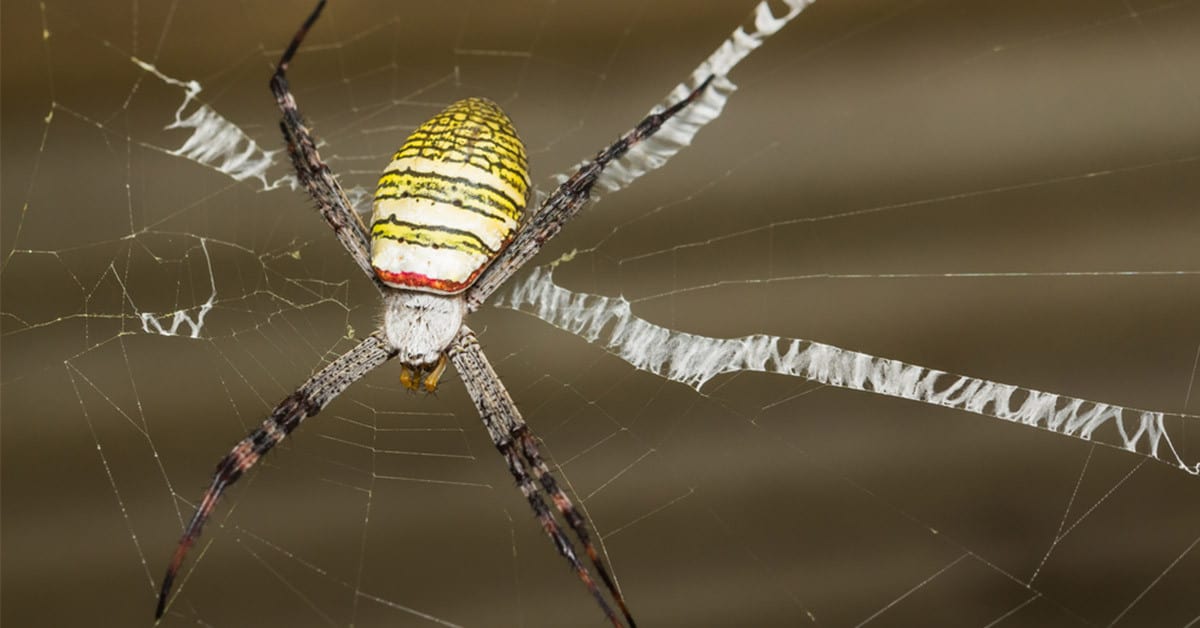
Now, here’s the fascinating part—the webs they weave. Picture this: imagine the lace doilies your Nanna puts under her vases. Well, the webs of these spiders look just like that! They’re intricate and delicate, resembling beautiful lace patterns. It’s like having a mini art exhibit right in your garden.
These webs actually serve a purpose. They provide shelter for the spiders, shielding them from the bright sun until they’re all grown up. Once they reach a certain age, they start weaving their pattern into a cross shape that corresponds with their body. It’s like they’re marking their territory with a stylish emblem.
So, you see, the Saint Andrew’s Cross Spider is not as fearsome as it might seem. They’re all about spinning stunning webs and adding a touch of elegance to your garden. They’re like the little fashionistas of the spider world, making sure their webs are on point!
So, the next time you spot a Saint Andrew’s Cross Spider in your garden, take a moment to appreciate their intricate webs and the beauty they bring to the world. They’re not here to frighten you but to remind you of the wonders of nature and the amazing diversity of creatures that surround us.
Spiders: Separating Fact from Fiction!
Hey there, young explorers! Let’s dive into the fascinating world of spiders and unravel the truth behind some common myths. Get ready for some spider-fic facts!
Did you know that spiders have been around for over 300 million years? That was way before dinosaurs roamed on our planet, Earth! But here’s a surprise: those ancient spiders didn’t spin intricate webs like we imagine. Instead, they sought shelter in underground burrows, where they could stay safe from the sun and sneaky predators.
Now, here’s a question for you: how good do you think spiders’ eyesight is? Well, most spiders actually have poor eyesight. They have eight simple eyes, but they don’t see very well. They rely on their other senses, like touch and smell, to capture their prey. However, some spiders, like jumping spiders, are true masters of sight and have excellent vision. They can spot their targets with ease!
What about Daddy-long-legs spiders? Have you heard the rumour that they are the most venomous in the world? Well, here’s the truth: Daddy-long-legs spiders have venom, but their fangs are so small that they can’t bite through human skin effectively. However, they are skilled hunters and can take down other spiders, like the dangerous Redbacks. So, while they aren’t the most venomous to us, they still play an important role in keeping other spiders in check.
Now, let’s talk about spider webs. You might think they’re flimsy and weak, but that couldn’t be further from the truth! Spider silk is incredibly strong and durable. In fact, scientists are studying it to develop new materials like fishing lines, medical sutures, and even protective armour cloth. Isn’t that amazing?
And here’s a mind-boggling fact: the smallest spider in the world is as tiny as a full stop! Can you believe it? The male Patu digua spider, from the Symphytognathidae family, is no bigger than the head of a pin. Talk about being itsy-bitsy!
Now, here’s some good news: no one in Australia has died from a spider bite in over 30 years. Thanks to the introduction of anti-venom in 1982, we can live in harmony with these eight-legged wonders. So, there’s no need to fear our spider friends. They play important roles in nature and are fascinating creatures to observe.
Remember, young adventurers, spiders are amazing and diverse creatures. They exist in all shapes and sizes, with unique abilities and behaviours. So, the next time you spot a spider, don’t forget to ask questions. The world is full of wonders, just waiting to be discovered!
Spider-Friendly Tips: Embrace the Eight-Legged Wonders!
In conclusion, my adventurous young friends, if you ever happen to come face to face with a spider in your home in Australia, remember to stay calm and be kind to our eight-legged visitors. Spiders definitely play an important role in our ecosystem by keeping pesky insects in check. So, instead of squishing them or running away in fear, let’s practise spider-friendly tactics!
First, if you see a spider, give it some space. Spiders usually prefer to mind their own business and are more scared of us [humans] than we are of them. Next, if the spider is hanging out in a place where it’s not bothering anyone, like a corner or a cosy web, it’s best to leave it be. It’s their little home, after all!
But, if the spider is making its way into an area where it might cause some trouble or make you uncomfortable, gently guide it outside using a cup and a piece of paper. You can be a spider superhero and help it find a new home in the great outdoors.
Remember, never try to touch or handle a spider with your bare hands unless you have an adult with you who knows it’s safe to do so. Some spiders can be venomous, and it’s always better to be safe than sorry.
So, my brave young explorers, let’s appreciate the amazing diversity of spiders we have in Australia while also respecting their space. By following these simple steps, we can coexist peacefully with our spider friends and create a harmonious home for all creatures, big and small. And if you want more information on amazing things you can explore in Australia check out our blog for things to do with kids. Or if you want details on other fascinating creatures found in Australia check out our recent page on Snakes in Australia.
For more adventure ideas – click here.
Happy Exploring!



